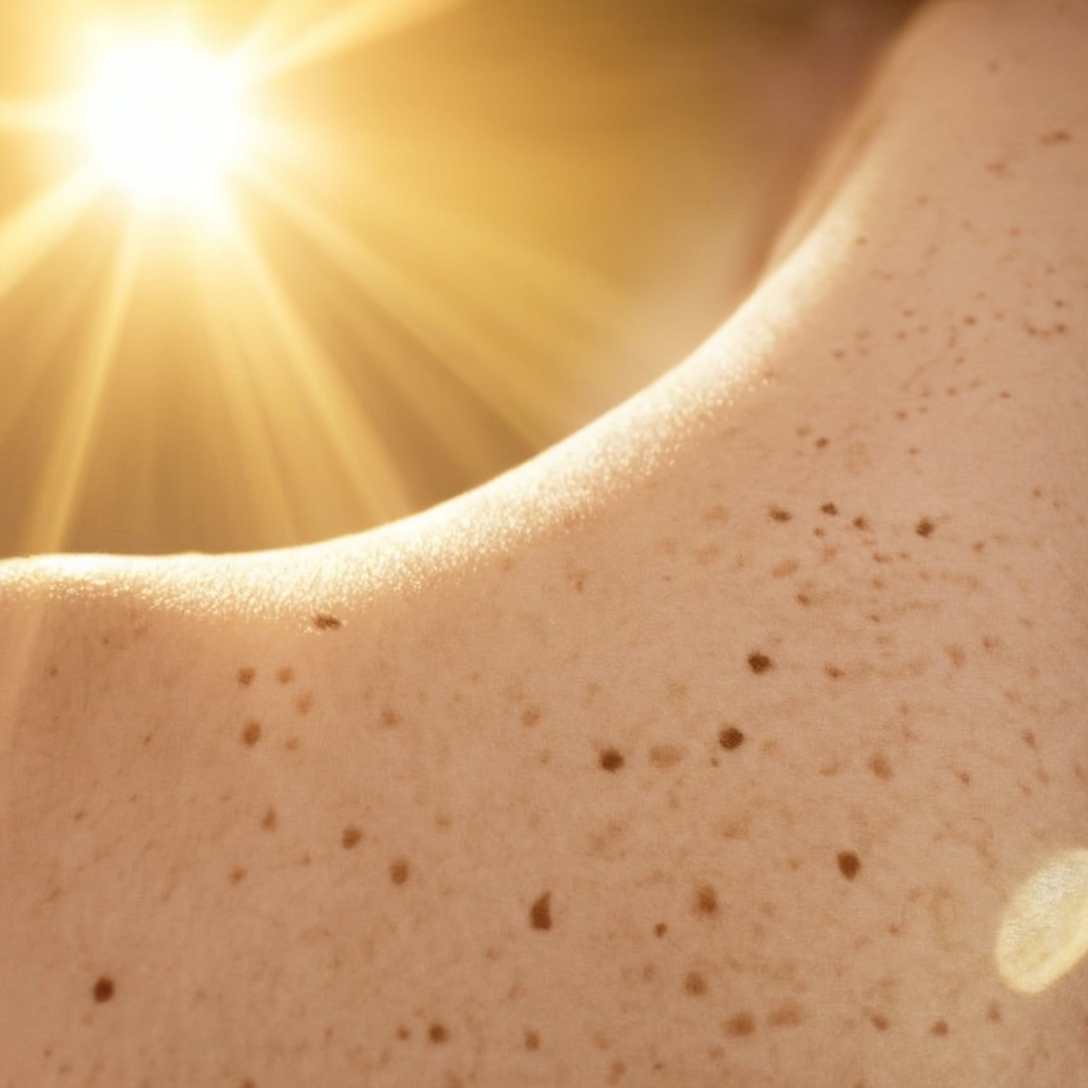Patients often complain of brown spots and discoloration that have appeared over time. Many are bothered by their presence on the face, neck, arms, and hands and feel that these spots “age” them and are unattractive.
How I manage these pigmentary changes depends on figuring out what triggered them and approaching the treatment based on a patient’s baseline skin type, age of skin, and severity of the changes.

What Are the Main Types of Skin Discoloration and Brown Spots?
There are three broad categories of pigmentation and discoloration:
- Sun damage
- Post-inflammatory hyperpigmentation (PIH)
- Melasma
Each type has a different cause and requires a customized treatment approach.

What Causes Sun Damage and Brown Spots?
Sun damage can result in freckling or age spots that are usually smaller and scattered sporadically on sun-exposed areas. These range in size from a few millimeters up to a few centimeters.
Sun damage is preventable and treatable, but if treated after a lifetime of exposure, it requires long-term management. While clearance can be significant, it is often not permanent.
How Can I Treat Sun Damage?
Treatment options include:
- Sun avoidance, sunscreen, and overall sun protection
- Topical retinoids, alpha hydroxy acids, and chemical peels
- Lasers that target brown pigment
What Is Post-Inflammatory Hyperpigmentation (PIH)?
Post-inflammatory hyperpigmentation usually results from trauma or inflammation, such as:
-
Cuts, acne scarring, skin irritation, or allergic reactions
These can occur anywhere on the body—not just in sun-exposed areas. In sun-exposed regions, healing may take longer.
Acne is a primary cause of PIH on the face and other acne-prone areas.
The pigmentation often resembles the original irritation and may have a reddish tone due to the inflammatory component. PIH can resolve completely over time, and treatment helps accelerate this process.
How Can I Treat Post-Inflammatory Hyperpigmentation?
Treatment options include:
- Treating the underlying condition (e.g., acne, eczema)
- Practicing sun protection and consistent sunscreen use to prevent worsening
- Using lightening agents such as hydroquinone, kojic acid, or azelaic acid
- Applying lasers that target red (vascular) or combined red and brown pigment

What Is Melasma and Why Does It Occur?
Melasma is a condition most commonly affecting the face and forearms. It is exacerbated by sun exposure but results from a combination of hormonal factors and leaky capillaries.
Certain medications can also cause pigmentation that resembles melasma. The pigment is typically brown and patchy, rather than discrete spots, and tends to be diffuse. Commonly affected areas include:
- Forehead
- Prominent parts of the cheeks
- Upper lip
- Forearms
How Can I Treat Melasma?
Melasma treatment depends on the depth of pigment and underlying cause. While improvement is achievable, complete clearance is difficult, and maintenance therapy is typically required.
What Melasma Treatment and Care Options Do I Have?
Treatment options include:
- Sun avoidance, protection, and daily sunscreen
- Topical retinoids, hydroquinone, and kojic acid
- Discontinuation of external hormones or contraception if appropriate
- Peels and lasers for superficial pigmentation
What If My Melasma Is Resistant to Treatment?
Resistant melasma, which typically involves deeper pigmentation or both superficial and deep pigment deposition, can be treated with advanced therapies.
Additional options include:
- More advanced lasers targeting deeper pigment layers
- Oral tranexamic acid
- Combination therapies with the above topical and procedural treatments
If you have concerns regarding your skin, discoloration and skin spots, speaking with a certified dermatologist is in your best interest. Reach out to us today at Skinsage to schedule a consultation and find treatments.




